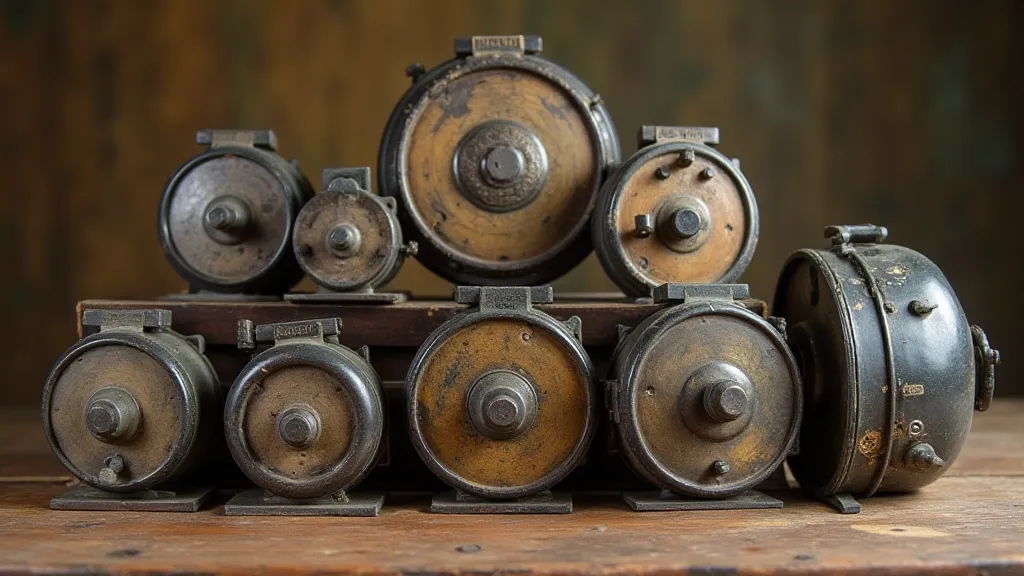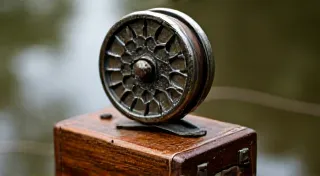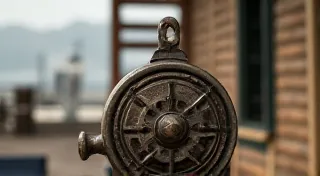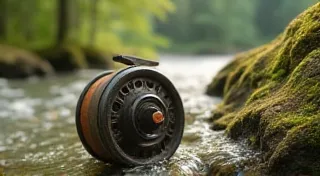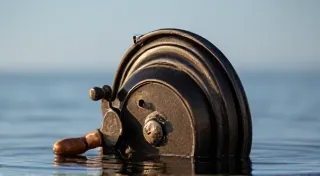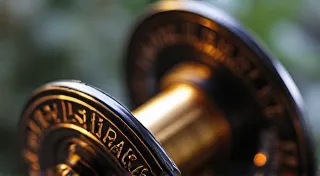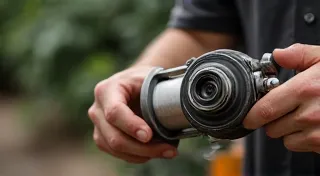The Rise and Fall of the Winslow Manufacturing Company
The world of vintage fishing reels is filled with fascinating stories of innovation, craftsmanship, and the relentless pursuit of a better cast. Among these, the story of the Winslow Manufacturing Company, though relatively short-lived, holds a unique place. While not a household name like Orvis or Pflueger, Winslow reels are highly sought after by serious reel collectors, prized for their elegant designs, unusual features, and the sheer rarity of finding them in good condition. This article explores the brief but impactful history of Winslow, detailing their key models and understanding why they’ve earned their place amongst the most collectible antique fishing reels.
Early Days: A Connecticut Beginning (1895-1903)
The Winslow Manufacturing Company was established in 1895 in Seymour, Connecticut. Situated in the heart of New England’s industrial belt, Seymour offered access to skilled labor and transportation networks crucial for any fledgling manufacturing venture. The company’s founder, William A. Winslow, had experience in the metalworking industry, which provided him with the technical know-how needed to produce fishing reels. Initially, Winslow focused on producing simpler, open-face reels – a common design for the time – targeting the burgeoning recreational fishing market.
These early Winslow reels were characterized by a utilitarian, functional design. They weren't flashy, but they were well-made and reliable. The company sold these reels through sporting goods retailers and mail-order houses, gradually building a small but loyal customer base. Early production records are scarce, making it difficult to fully understand the scope of their initial output, but it's believed they produced a modest number of reels annually.
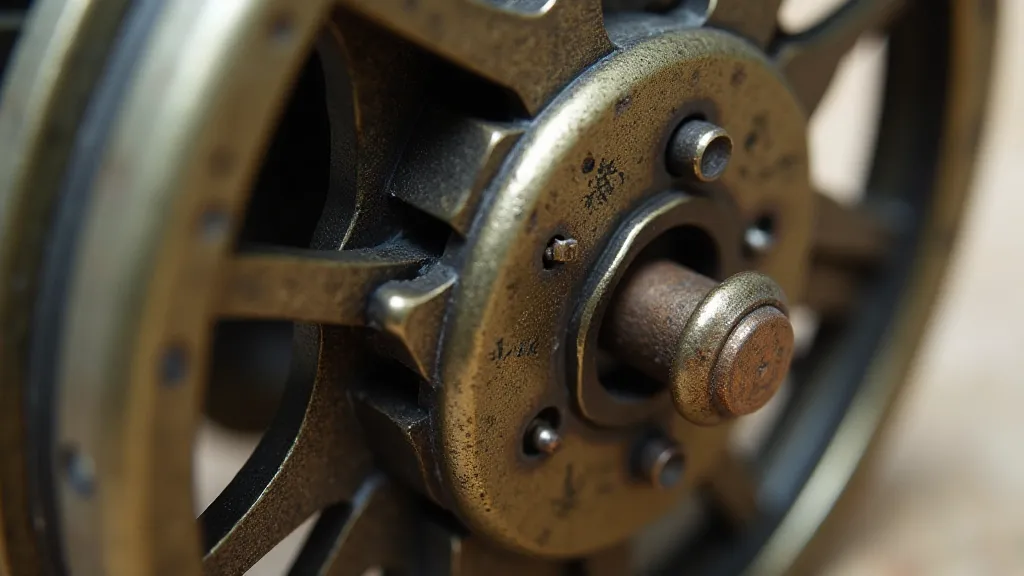
The Innovation Years: The "Automatic" and Closed-Face Models (1903-1908)
The years between 1903 and 1908 mark the period of Winslow’s greatest innovation and arguably their most sought-after models. This is when they introduced their groundbreaking “Automatic” series of reels. These were among the first reels to incorporate a level-wind system – a feature that automatically keeps the fishing line evenly distributed on the reel spool as it's wound. This significantly improved casting accuracy and reduced line tangles, a major advantage over the earlier open-face designs. Understanding the nuances of vintage reels and their features is a key component to appreciating their value. For those new to the hobby, exploring a vintage reel glossary can be immensely helpful in deciphering the terminology and appreciating the intricacies of these historical artifacts.
The Automatic series was initially offered in both single-motion and double-motion versions (double-motion reels had two cranks, increasing winding speed). Several variations emerged during this time, categorized by size (often indicated by numbers like 1, 2, or 2 ½), and by the presence or absence of a patented line guide – a small, often ornate, piece of metal designed to further improve line flow. These reels are prized by collectors not just for their functionality, but also for the craftsmanship evident in the engraving and detailing on the reels. The quality of the materials used – typically high-grade brass or bronze – further adds to their desirability.
In addition to the Automatic reels, Winslow also began experimenting with closed-face designs, a response to the growing popularity of this type of reel. While less common than the Automatic models, these closed-face Winslows are also becoming increasingly collectible, particularly those with unique features or unusually high levels of finish. Deciding whether to focus on fly reels or spin reels can be a significant choice for collectors. Identifying and valuing fly reels versus spin reels helps navigate this initial decision and understand the differences in collecting these unique pieces of history.
The Decline and Disappearance (1908-1912)
Despite the innovations and growing recognition, the Winslow Manufacturing Company’s run was remarkably short. By 1912, the company had ceased production. The reasons for its demise are not entirely clear. Several factors likely contributed to its downfall.
Competition from larger, more established fishing reel manufacturers was undoubtedly a significant challenge. Companies like Orvis, Pflueger, and Hardy had deeper pockets and wider distribution networks, making it difficult for Winslow to compete effectively. Economic downturns during this period, coupled with rising material costs, likely exacerbated the situation. The condition of a reel significantly impacts its value, a key determinant for serious collectors. Learning about understanding reel condition and grading is essential for anyone looking to buy, sell, or simply appreciate antique reels.
There’s also speculation that internal management issues or disagreements among the company's founders may have played a role. Unfortunately, detailed records from this era are sparse, leaving much of Winslow's final years shrouded in mystery. What is known is that after 1912, the Winslow name disappeared from the fishing reel landscape.
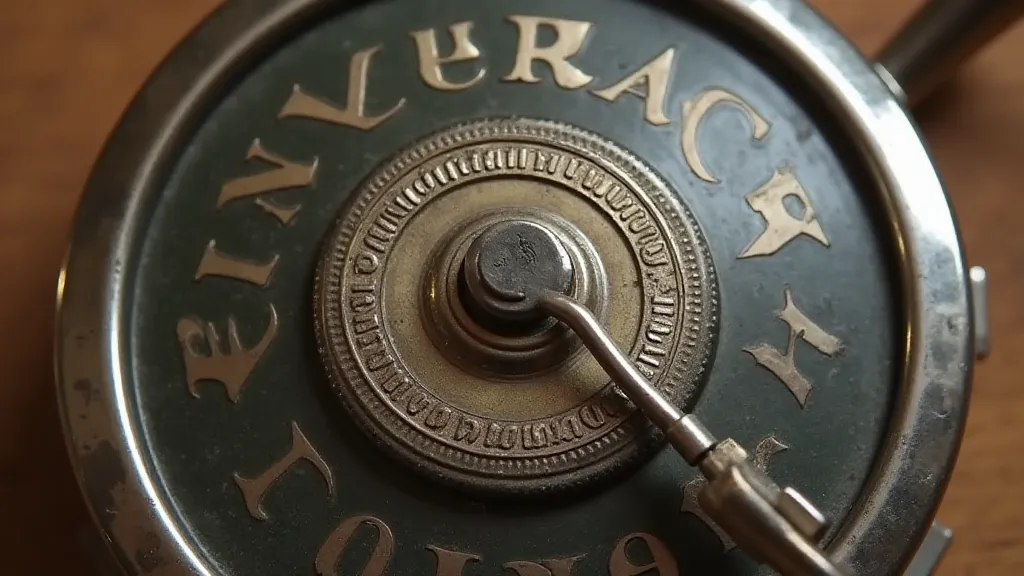
Collectible Winslow Models: What to Look For
For reel collectors, Winslow reels represent a compelling chase – a chance to acquire a piece of relatively obscure history with a unique aesthetic. Here are a few of the most sought-after Winslow models:
- Automatic Series (1, 1 ½, 2, 2 ½): These are the cornerstone of Winslow collecting. The smaller sizes (1 and 1 ½) are generally more difficult to find and command higher prices.
- Automatic with Patented Line Guide: The presence of a patented line guide, often bearing a distinctive design, is a key indicator of value.
- Double-Motion Automatic: These reels are rarer than the single-motion versions.
- Closed-Face Winslows: While less common, these reels, particularly those with unique features or exceptional finish, are becoming increasingly desirable.
- “Prototype” or “Special Order” Reels: Rumors persist of a small number of prototype or specially ordered Winslow reels, but their existence remains largely unconfirmed.
When assessing the value of a Winslow reel, several factors are considered: condition, completeness (including the handle), originality (ensuring that all parts are original to the reel), and rarity. Reels in excellent condition, with all original parts, and with desirable features (like a patented line guide or double-motion mechanism) will command the highest prices. Rust, corrosion, and missing parts can significantly diminish a reel's value. The history of renowned fishing reel manufacturers provides valuable context for appreciating the significance of lesser-known brands like Winslow. The Hardy Brothers story exemplifies the legacy and innovation that define the world of vintage reels.
Legacy and Conclusion
The Winslow Manufacturing Company may have vanished from the scene relatively quickly, but their contribution to the world of fishing reels should not be overlooked. They were pioneers in the adoption of the level-wind system, a feature that revolutionized fishing reel design and remains a standard feature on many reels today. Their reels represent a fascinating chapter in the history of American manufacturing and a testament to the ingenuity and craftsmanship of a bygone era.
The scarcity of Winslow reels only adds to their allure for collectors. Each reel tells a silent story of innovation, ambition, and the relentless pursuit of a better cast. Finding and preserving these historical artifacts is a labor of passion, ensuring that the legacy of the Winslow Manufacturing Company continues to be appreciated by generations of reel enthusiasts.
